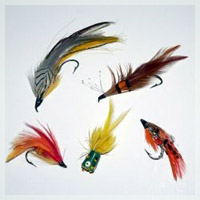 The internet is filled with websites competing for the same niche, which makes it very difficult to attract visitors to each individual website. Without proper promotion, a website could just sit idle for days, weeks or even years and people wouldn’t notice it.
The internet is filled with websites competing for the same niche, which makes it very difficult to attract visitors to each individual website. Without proper promotion, a website could just sit idle for days, weeks or even years and people wouldn’t notice it.
Website owners know this fact, so they have learned to adjust to the online fast-paced environment and one method of promoting websites they’ve come up with is to use link baits on their sites.
In this article you’ll find out what is a link bait, what types of link baits are there and how to plan and write the perfect link bait blog post.
What is Link Baiting?
The term ‘linkbait’ is used to describe a tool for websites designed to “lure” or generate incoming links to a particular site. It is there for the purpose of attracting web users to visit a website (increasing traffic), and as a result, they generate material which is linked and picked up by other sites.
Link baiting also pushes a site up on the search engine ladder, as a lot of search engines look at how many websites link back to yours, their quality, and measure your site’s value through these links.
Link baits definitely help promote a website, although not all link baits can be considered “good”. There are two basic types of link baits: good and bad link baits, based not on their effectiveness, but on their “attitude”.
Good Link Baits
A good link bait is simply anything that is meaningful, insightful, new, or interesting and also, is acceptable to a majority of web users. It could also give incentives to visitors, like contests.
A great example of “good link baiting” is Daniel Scocco’s post: 43 Web Design Mistakes You Should Avoid. It’s a very useful and comprehensive article that managed to attract over 350 comments. Unfortunately, DailyBlogTips.com does not display trackbacks, but, judging by the huge amount of comments, we can imagine how many back links that article received.
Bad Link Baits
Bad link baiting, on the other hand, is publishing controversial or contentious content, which can be highly effective, although some may find it distasteful.
An excellent recent example of “bad link baiting” is Shoemoney’s post – SEO Has No Future – a very controversial topic that not only managed to attract a huge amount of back links (Blogsessive included, twice now), but also an impressive amount of comments.
In order to write a good and effective link baiting blog post, here are some tips on the actions you need to take before getting started.
Brainstorming
Write down all the ideas that you come up with on a certain topic, no matter how weird or far-fetched they are. You don’t need to edit your notes at this time since you would like to build a “database” of all your ideas on the matter.
Filtering
Once you have gathered all the ideas you could think of, the next step is filtering them. Break down the ideas into their Concept and Content components. Separate the format (Concept) of the suggested link bait (quizzes, contests, tools, etc.) and the subject (Content) of the suggested link bait (celebrities, Microsoft, ads, etc.) into two lists.
Evaluation
Critically evaluate all notes under the Content list, ignoring those that are in the Concept list. Check if the ideas are appropriate for the current time setting and if these are the ideas you would like to write about. You might also want to research if there is any related news that complements your link baits.
Matching
Once you’ve prioritized your Contents, you can now match them with your Concepts. If you want your link baits linked to a specific music website, write down the Concepts that would match there, like top ten, awards, contest, etc. By matching the right Content to your Concept, you can make sure that your link bait would reach your targeted audience, meaning what you’re writing about is effective.
Some people believe that good link baiting is a great SEO tool, and they are right. With proper use, link baits would surely increase traffic to any website.
Photo credits to Dale Eurenius
